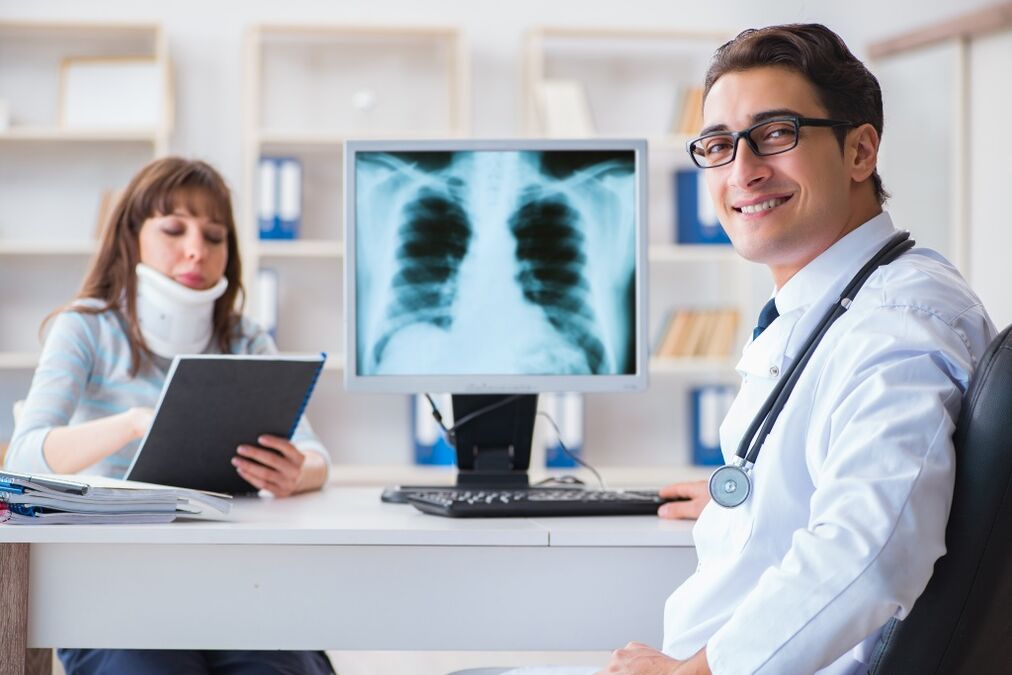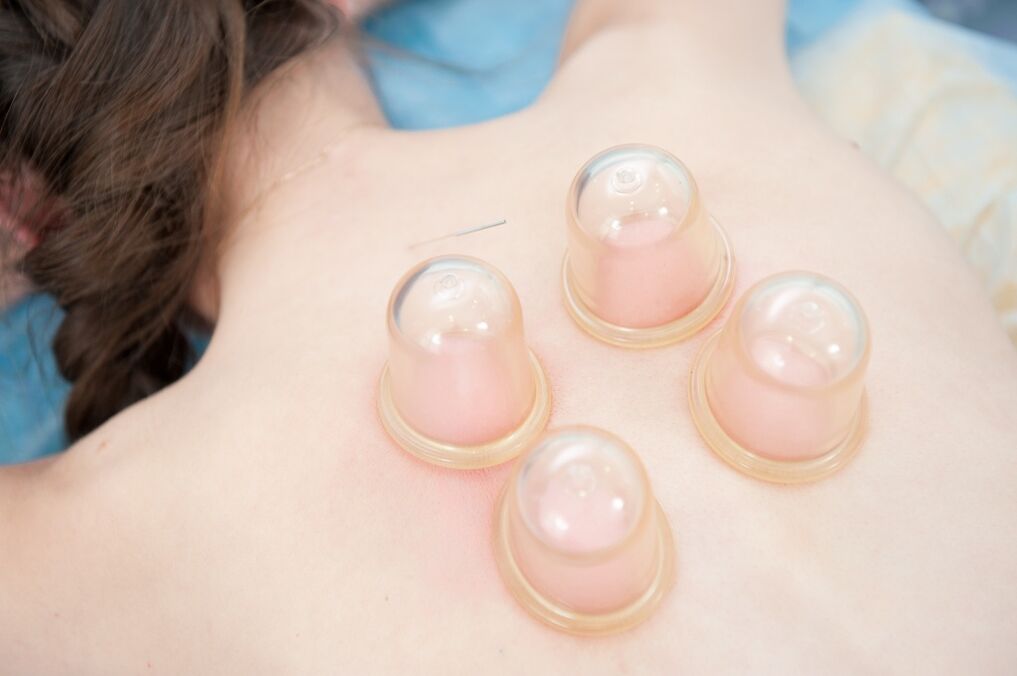
Osteocartilage degeneration is a deep disease of malnutrition that violates the structure and function of the intervertebral disc during this period.The osteocartilage of the neck is a lesion of the cervical spine.
During the pathological process, the osteocartilage of the pulp of the intervertebral disc (center, soft part) becomes bone, thus losing its depreciation characteristics.The cervical spine loses flexibility, mobility, and blood vessels and nerve ends invade in the canal between the vertebrae.The particularity of this pathology is that its symptoms can be similar to signs of other diseases, and therefore, appropriate treatment is prescribed when the diagnosis of the disease is difficult and irreversible changes have begun in the cartilage tissue.
Cervical osteochondria, its symptoms and treatment will be described below, as well as cervical osteochondria, development of middle and elderly people, early in women, in recent years, major "revival" of neck osteochondria osteochondria osteochondria in recent years.Of course, over the years, even in a healthy spine, the cartilage tissue of the intervertebral disc was replaced by fibrous fibers over time, it would be compacted and hardened.This process is natural, and it causes a reduced mobility of the spine, but is usually due to pain rather than accompanying, as the fibrosis process does not affect the nerve endings and does not cause infringement.In contrast to natural physiology, pathological changes in the disc (characteristics of osteochondrosis) are spread outside the cartilage, which causes compression, pain and vascular syndromes in the blood vessels and nerve ends.
Causes of cervical bone and chondropathy
Partly in the osteocartilage of the neck, the discomfort of modern people, the corresponding distribution of load along the spine along the spine and the natural process of aging of body tissues, and there are many outrageous pathological developments and progress:
- A sedentary lifestyle;
- Stay in the same position for a long time during work;
- Too much weight;
- Continuous damage to the spine on the neck;
- Chronic stress, sustained nerve tone;
- The periodic hypothermia of the muscles in the clavicle area (e.g., when it flows from the air conditioner closes);
- Congenital vertebrae abnormalities and intervertebral discs.
What did the dangerous osteocartilage on the neck become?
First, osteochondrosis in the neck complicates many movements, makes them painful, and makes his contributions work the patient's muscles, the latter itself being harmful.A vicious cycle has emerged: small physical activities can cause osteochondrosis, which reduces the patient's physical activity, which in turn helps the disease progression.
Furthermore, in the channels along the vertebrae of the cervical region, holding the most important plexus and blood vessels, irritation and infringement can lead to reflex headaches, chronic dizziness, and stable blood pressure, which can make the patient inconsistent, thereby significantly reducing their quality of life.
The particular danger of cervical osteocartilage degeneration lies in its difficult diagnosis and the possibility of improper inadequate treatment.
Symptoms of cervical osteochondrosis
The symptoms of cervical osteochondrosis are exhausted, which greatly complicates the diagnosis.As a result, even if the process in the vertebrae is an irreversible feature, the patient targets the doctor.The most important symptoms of cervical osteochondrosis include:
- Dizziness;
- Headache;
- Rapid changes in blood pressure.
All the signs listed are nonspecific and can point not only to cervical or cervical osteochondrosis, but also to many other diseases.Therefore, any of these symptoms is very important, consult a doctor and conduct a comprehensive medical examination to find out the real cause of the disease.
In addition, the cervical spine is a characteristic of cervical osteocartilage degeneration or neck pain.It can position it “deep” in the neck and then place it on the shoulders.The sudden start of a pain attack is characteristic - after awakening, sneezing or coughing, laughing, and sharp movement.Usually, the pain is gentle, and the tightening in the cervical vertebrae binds together when trying to turn the head, and if the process has not yet received an irreversible current, it subsides on its own.
In addition, it should be said that blood pressure fluctuations in cervical osteochondritis.This is a nonspecific symptom, but there are some signs that, based on these signs, a link between blood pressure jumping and osteocartilage degeneration can be established.This connection is characterized by fluctuations in blood pressure throughout the day.On the contrary, long-term hypertension is atypical for osteocartilage bone.The reason for pressure fluctuations is the reflex response at the nerve ends on the blood vessel wall to cope with its stimulation and compression.Usually, blood pressure in osteochondrosis is progressing rapidly, accompanied by headaches, limb pain, damaged clavicle muscles and impaired skin sensitivity.
In addition, cervical osteochondrosis is characterized by multiple syndromes (combination of several symptoms):
- Spinal- Many symptoms are associated with skeletal tissue damage to the vertebrae (pain in the neck trying to turn the head, violation of the activity of the cervical spine, morphological changes in the vertebrae and intervertebral disc);
- Driven arterial syndrome- Many symptoms indicate the connection between the pathological process and the vertebral artery.Insufficient blood flow when arteries compress, noise in the ears, dizziness, blood pressure skills, nausea to vomiting, amazing feeling.Migraine, flickering of the "flies in the eyes" and temporary reduction in vision show stimulation of the nerve ends on the walls of the arteries.Oxygen starvation in brain tissue (feeding vertebral arteries) oxygen is manifested by fainting, chronic lethargy, mild constant headache, feeling of weakness, concentration and performance.This syndrome is not only a characteristic of osteochondrosis, but also atherosclerosis and other pathological features of circulatory diseases in the vertebral artery.
- Koreshka-Due to the compression of the spinal nerve roots, it occurs, and one aspect of failure is characteristic.Typical symptoms: pain, impaired sensitivity, surgery and paralysis, face and neck;
- Heart - Many symptoms are caused by cardiac reflex disorders (pain, burning behind the sternum, shortness of breath, tachycardia).
The degree of osteochondrosis in the neck
First degree- Characterizes the initial stage of the disease, neck pain and sneezing after sudden exercise.Pain is acute, similar to the emission of current.Meanwhile, damage to the disc sac is morphologically morphological, which causes stimulation of nerve endings.The pain in the neck may be accompanied by pain in the back of the head, noise in the ears, flies flashing in front of his eyes.
Second degree- Period of disease progression.At this stage, the pain in the neck becomes constant, the narrowing of the foramen of the vertebrae, in this regard - the roots of the spinal nerves are regularly eroded and angiogenesis.The capsules of the intervertebral joints are thinner, and the pathological mobility of the spine occurs in this area.Muscle atrophy.Fluctuations in blood pressure are characteristic.During severe illness, “symptoms of lower head” may occur – the head needs to be supported with hands to relieve pain and repair it to a certain position.
The third degreeIt is characterized by the destruction of the annulus of the intervertebral disc, and the result is that complications of osteocartilage degeneration are possible: dislocation of the vertebrae, dislocation of the disc hernia, and curvature of the spine.The pain is very tense. In addition to the pain on the neck, it will also be troubled by headaches, dizziness, and rapid blood pressure jumps, and the patient will lose his ability to work.
Diagnosis of cervical osteochondral disease

Based on the diagnosis of "neck osteochondrosis" of the patient's examination and investigation, the degree of morphological changes in the intervertebral disc can help establish X-ray examination and magnetic resonance imaging.In addition, it is important to rule out other diseases with similar symptoms: heart attack, hypertension, organic brain damage, migraine, and consultation with relevant experts is required.
Treatment of cervical vertebrae bone marrow disease
The volume of treatment methods for cervical osteocartilage depends directly on the degree of pathological processes.Treatment will be more effective than before starting, so it is especially important to consult a doctor in time to see a pain in your neck, dizziness, and not wanting painful symptoms to spread by themselves.
In the initial stages of the disease, the use of topical (oints, creams) or systemic (tablets, injections) NSAID and painkillers reduces the treatment of cervical osteocartilage to eliminate pain syndrome.In addition, the recovery of normal metabolic processes in the cartilage tissue of the intervertebral disc plays an important role, and for this purpose the cartilage protector is used - a drug that stimulates metabolism in the cartilage of its structure.Cartilage protectors stimulate the production process in cartilage tissue that forms proteoglycan tissue that cartilage structures.Meanwhile, inflammatory and destructive processes in cartilage tissue are suppressed.
As the pathological process progresses, the addition of the above treatments can be used as a tone and muscle relaxant to eliminate muscle spasms.Doctors may recommend novicaine blockage to relieve pain, but this approach can be attributed entirely to palliative care, eliminating the symptoms of pain without affecting the process of osteocartilage in the neck.With advanced osteochondrosis, surgical treatment may be the only effective treatment, as the possibility of conservative treatment has been depleted at this stage.
Physical treatments for osteochondrosis have proved themselves well: electrophoresis, magnetic therapy, ultrasound therapy, mud.Traditionally, an important part of complex treatment of osteochondrosis has been massage and manual therapy. It should be remembered that all physical therapy methods must be used only if the cervical osteochondrosis is in the remission stage, otherwise you can only activate the pathological process.Any operation during the massage should be as gentle as possible.
It should be remembered that all physical therapy methods must be used only if the cervical osteochondrosis is in the remission stage, otherwise you can only activate the pathological process.Any operation during the massage should be as gentle as possible.
Medical Sports (Exercise Therapy) for Cervical Osteochondrosis
The important role of exercise therapy in the treatment of osteochondrosis.Physical therapy exercises are different, but their overall nature remains unchanged: they neatly restore healthy mobility in affected areas of the spine and are associated with blood supply and nutrition in cartilage tissue.By diagnosis of "cervical osteochondrosis", practice should be as little as possible and the load on the spine is small.Sudden turns, rotational movements, deep tilts are unacceptable, which may damage the capsules of the intervertebral joints and exacerbate the pathological process.
Prevent cervical osteochondral disease
The cartilage has not recovered, so it is recommended to prevent its progression rather than attempting to treat the consequences.The basis of preventing cervical osteochondrosis is a healthy lifestyle, reasonable mobility, reasonable nutrition, weight control, a small amount of breakthroughs in gymnastics, and professional activities that last for a long time.Additionally, at the first sign of cervical dysfunction, you should consult your doctor and if there are any signs of starting a cartilage protective agent, which will help normalize metabolism in the cartilage and significantly reduce the progression of the disease.


















